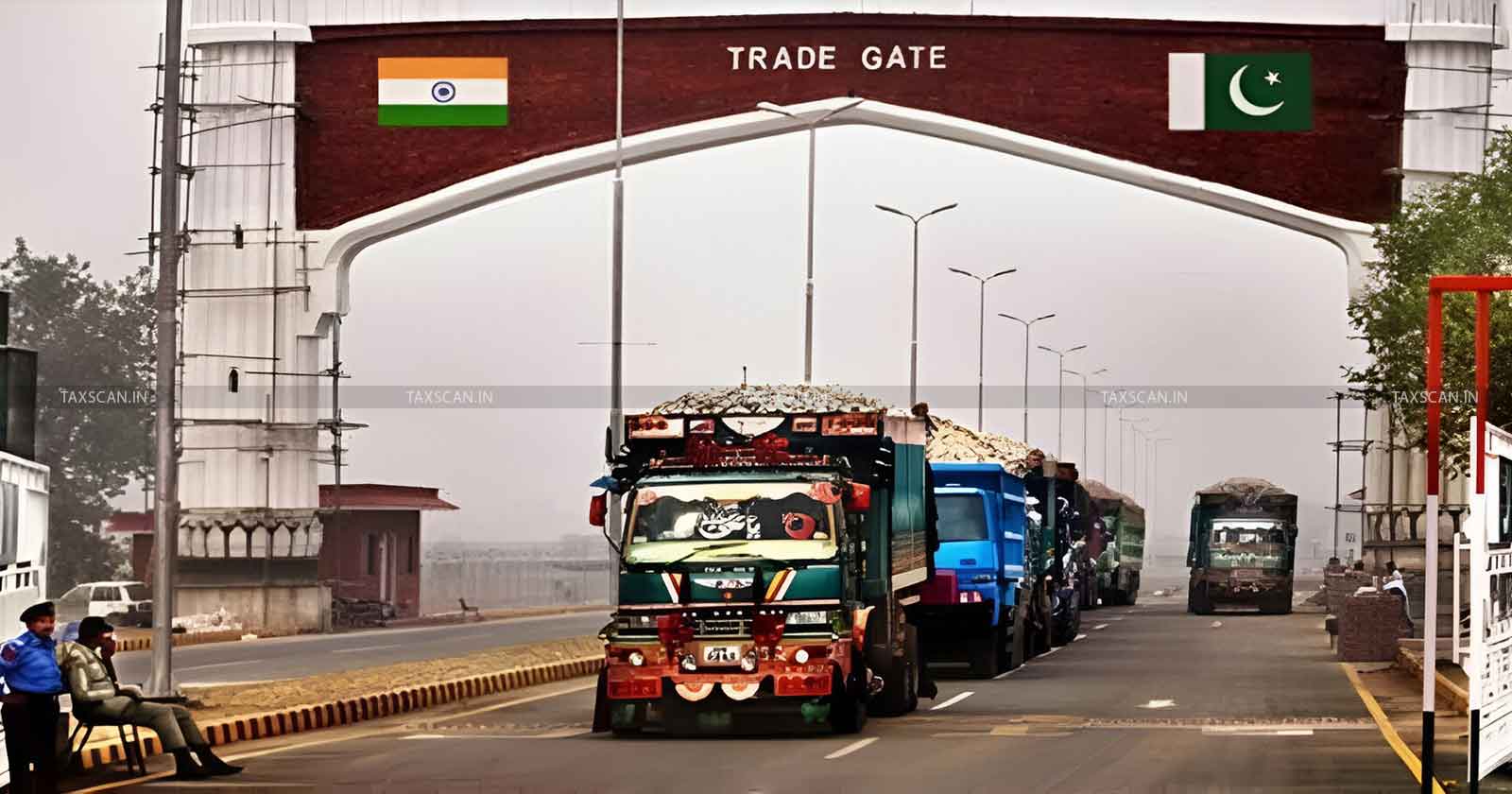India-Pak Tensions - Impacts on Trade Routes, Import of Goods, Transit Issues
India-Pakistan tensions after the April 2025 attack have stopped key trade routes, shut ports, and disrupted $447.7 million in bilateral trade and Indian Ocean shipping.

Tensions between India and Pakistan have risen sharply after a deadly terrorist attack in Pahalgam, Kashmir, on April 22, 2025, where 26 civilians were killed. India blamed the attack on Pakistan-based groups and responded with military action, including an air operation called Operation Sindoor on May 7, 2025. Both countries have now taken military and diplomatic steps that have deeply affected trade, especially between them, and also for other countries that depend on the region.
This article explains how these tensions are disrupting trade routes, stopping imports and exports, making transport more difficult, and even affecting countries far away from India and Pakistan.
Know Practical Aspects of Tax Planning, Click Here
Read More: Wаrtime Tахаtiоn: How Governments Raise Revenue During Соnflict
1. Disruptions in Trade Routes
Pakistan's Karachi Port Affected
- Karachi Port is Pakistan’s biggest port and handles around 60% of its sea trade.
- India has sent warships, including INS Vikrant, close to Pakistan’s coast. Although there’s no official naval blockade, the threat is serious.
- Because of the risk, major global shipping companies like COSCO and OOCL have stopped shipping to Karachi.
- Ships now have to go to smaller ports like Gwadar or Port Qasim, which are not as developed, causing delays and higher shipping costs.
India-Pakistan Shipping Corridor Closed
- Pakistan used to move goods through India’s Mundra Port to send items to Europe.
- This route has now been closed, which means goods must travel longer routes through other countries like the UAE, which takes more time and money.
Read More: CBIC exempts Basic Customs Duty on Works of art and Antiques [Read Notification]
Land Route Shut Down
- The Wagah-Attari border crossing, the only official land trade route between India and Pakistan, has also been shut.
- This has stopped both formal trade and a lot of informal trade, which was often done through Dubai or other third countries and was worth around $10 billion per year.
2. Imports and Exports: A Total Trade Freeze
India’s Import Ban
- India has banned all imports from Pakistan, reducing trade from $420,000 (April 2024–Jan 2025) to zero.
- Previously valued at $2.86 million in FY 2023–24, imports included niche items like pink Himalayan salt, dried fruits, and specialty textiles.
- The ban extends to indirect imports via third countries, targeting attempts to circumvent direct trade restrictions.
Pakistan’s Dependency on Indian Pharmaceuticals
- This trade freeze is more damaging for Pakistan, particularly in pharmaceuticals, where Indian formulations and raw materials are irreplaceable in the short term.
- Exporters warn of potential shortages, especially for life-saving medications and APIs (Active Pharmaceutical Ingredients).
Minimal Impact on India
- India’s exports to Pakistan were worth $447.7 million, a mere 0.06% of its global trade. Key exports included organic chemicals, plastic articles, and iron and steel products.
- The ban has limited macroeconomic impact on India but serves as a strong geopolitical statement.
Read More: Govt imposes Anti-Dumping Duty on Sodium Citrate and Glufosinate and its salt from Two Countries [Read Notification]
3. Transit and Logistical Bottlenecks
Airspace Restrictions
- India has closed 27 airports and canceled over 430 flights through May 10. International carriers like Lufthansa, Singapore Airlines, and Emirates have been forced to reroute.
- Avoidance of Pakistani and Indian airspace has increased Europe-Asia flight times by up to 90 minutes, raising costs and affecting tourism and cargo operations.
Port Restrictions and Mail Suspension
- Both countries have issued mutual bans on port access, further crippling sea logistics.
- Postal exchanges have been suspended, disrupting communication and small-scale commercial consignments.
Read More: CBIC Imposes 5-Year Anti-Dumping Duty on Textured Tempered Glass Imports from China and Vietnam [Read Notification]
4. Impacts on Third Countries and Global Trade
Afghanistan
- Afghanistan depends on land routes through India and Pakistan to bring in important goods like wheat and fuel.
- The Wagah-Attari land border, which was a key trade route, is now closed.
- This is directly hurting Afghanistan’s economy, as it now struggles to get essential items on time.
China
- China trades a lot with Pakistan and uses shipping companies like COSCO, which have stopped going to Karachi Port.
- China also uses indirect or informal trade routes, often through Southeast Asian countries. These are now at risk of being blocked or delayed, which can affect global supply chains and product deliveries around the world.
Transit Hub Countries (UAE, Sri Lanka, Singapore)
- These countries act as middle points where goods are stored or passed through before reaching their final destinations.
- Because of tensions, ports like Dubai are facing delays and more inspections, especially for goods that were rerouted due to the India-Pakistan conflict.
- This can slow down trade and raise costs for businesses in these countries.
Countries in the Middle East, Africa, and Southeast Asia
- Many of these countries rely on Indian Ocean trade routes to receive goods.
- Since ships are being rerouted to avoid danger, there are shipping delays and higher costs.
- Even though the Strait of Hormuz isn’t directly involved in this conflict, any nearby tension can still affect oil shipments and increase risks in the region.
Complete practical guide to Drafting Commercial Contracts - CLICK HERE
5. Comparison of Naval Strength
| Country | Total Warships | Aircraft Carriers | Submarines | Power in the Region |
| India | 140 | 2 (including INS Vikrant) | 16 | Strong |
| Pakistan | About 25 | 0 | 6 | Weaker |
- India has a much stronger navy than Pakistan.
- If India decides to block Karachi Port, Pakistan would face huge problems, as over 90% of its trade depends on sea routes.
- Experts say a full blockade would be an act of war, but even current naval moves are a strong warning.
6. Economic Impact
Pakistan's Economic Risks
- Pakistan’s economy is already weak, with a GDP of $348.72 billion.
- The country could face medicine shortages, rising prices, and trouble exporting goods.
- The informal trade through Dubai and Iran is also at risk.
India’s Economy Less Affected
- India has a much larger economy ($4.2 trillion) and won’t feel much impact from losing trade with Pakistan.
- Maintaining military readiness and tension at borders has costs for India, too.
Wider Regional Effects
- SAARC (South Asian Association for Regional Cooperation) is now basically inactive due to tensions.
- Countries like Thailand, Singapore, and African nations may see higher shipping costs, flight delays, and supply chain problems.
Conclusion
The rising conflict between India and Pakistan in 2025 has nearly stopped all official trade, caused huge problems in transport and shipping, and started affecting other countries that rely on the Indian Ocean for their trade.
Tax Planning For NRIs - CLICK HERE
Pakistan is facing the worst economic impact, especially in essential sectors like medicine. India remains mostly economically safe, but the situation adds to regional instability. If tensions rise further and India blocks Karachi Port, the global trade system, especially in the Indian Ocean, could face serious challenges.
Support our journalism by subscribing to Taxscan premium. Follow us on Telegram for quick updates


